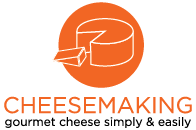Downloads
Dosage and pack size
· Large size (50UA in foil sachet) will inoculate 500 to 1,700 litres of milk depending on the dosage used 25g – $55
· Medium size (14 UA in a large screw cap bottle which is just under 1/3 of a large pack) will inoculate 150 to 500 litres of milk depending on the culture dosage used 30g – $26
· Small size (7UA screw cap bottle which is 1/7th of a large pack) will inoculate 70 to 200 litres of milk depending on the dosage used 15g – $16
An approximate guide for usage is 1 to 2 Drop mini spoons (1 Drop = 1/64th teaspoon) to 1 litre of milk. However, this dosage level is not critical and can be increased or decreased without problems being caused. If you add more culture, you will achieve faster incubation. If you add less culture, you will achieve slower incubation. If the yoghurt mix has added solids, additional culture may also be required (e.g. different kinds of milk, mixes with added cream, sugar, powder, etc., may cause the cultures to have a slower acid production rate).
Contains the following cultures
- Streptococcus thermophilus
- Lactobacillus bulgaricus
- Lactobacillus acidophilus (probiotic)
- Bifidobacterium lactis (probiotic)
Details
Dosage: An approximate guide for usage is 1 to 2 drop mini spoons (1 Drop = 1/64th teaspoon) to 1 litre of milk. But this dosage level in not critical and can be increased or decreased without problems being caused. Increase dosage for faster incubation or if the mix has added solids such as cream, sugar, powder etc.
Yoghurt 747 is ideal for tub set and stirred yoghurts, Greek style yoghurts, thick body drinking yoghurt and strained yoghurt (labneh). It has a fast incubation like Y986 but a different flavour and texture profile.
Acidification: Medium to Fast
Texture: Thick texture and short body
Flavour and aroma: Very mild aroma
Storage
Store in the freezer
Religion and Dietary Status
Kosher approved
Halal approved
To help you make yoghurt
For best results for yoghurts (whether for smoothies, drinking yoghurts, stirred, or natural set (pot set), use milk with a high level of natural fat and protein. Homogenised or non-homogenised milk is both suitable as well as full fat or low fat. Add skim or whole milk powder, sweetener or cream to the milk as required.
- For Greek Style yoghurt, add up to 4% – 6% milk powder to the milk
- For a traditional yoghurt, add up to 2% milk powder to the milk
- For a drinking style yoghurt, just use straight good quality milk, with nil additives.
Heat the yoghurt mix to greater than 92°C for a few minutes (stirring constantly to avoid burning) and then cool to incubation temperature between 37°C – 43°C, add the starter culture, stir in well and incubate overnight until the desired acidity is reached before cooling.
I do not recommend adding ‘thickeners,’ e.g., stabilisers, starches, gelatines… to homemade yoghurts; they can be hard to source, are expensive, and may not be the correct ingredient anyway; it complicates the process, but simply it is not necessary.
The time that it takes to incubate yoghurt to the desired acid level will vary depending on:
- How much culture is added?
- How much solids if any are added?
- Temperature of incubation?
- Final level of acidity required?
A simple taste test is the best tool that you have as a home yoghurt maker to know when that desired acidity is reached.
The yoghurt needs to have formed a gel to be ‘finished’. If the gel is too acidic at this stage, very very gently stir in some honey or sugar to ‘reduce’ the acid taste.
If the yoghurt is not acidic enough, then continue incubation. When the yoghurt tastes right, finish the incubation by placing it in the fridge.
If the acid level is not high enough, continue incubation.
Subculturing the previously made batch of yoghurt to culture a new batch of yoghurt is a common practice. However, you do not achieve a high-level probiotics after a second batch of yoghurt is incubated using this process. The yoghurt culture in the pack is formulated with a very high level of probiotic cultures. However, these cultures are very slow growers when the overnight incubation commences.

